Submersible hydrostatic level sensors designed for long-term immersion in seawater, engineered with corrosion-resistant materials to withstand harsh coastal and offshore environments. Ideal for tidal level monitoring, wave height measurement, and other depth-related applications.
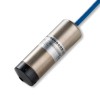 LMK458 Marine Approved Hydrostatic Level Transmitter - Marine approved level transmitter with 4-20mA output for measuring level of contents inside ship ballast, fuel, liquid cargo or wastewater tanks
LMK458 Marine Approved Hydrostatic Level Transmitter - Marine approved level transmitter with 4-20mA output for measuring level of contents inside ship ballast, fuel, liquid cargo or wastewater tanks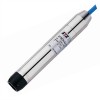 ATM/N Titanium Submersible Hydrostatic Pressure Transmitter - All Titanium submersible pressure transmitter for measuring the hydrostatic level of leachate, brackish water or sea water. Ranges from 1 up to 250mWC.
ATM/N Titanium Submersible Hydrostatic Pressure Transmitter - All Titanium submersible pressure transmitter for measuring the hydrostatic level of leachate, brackish water or sea water. Ranges from 1 up to 250mWC. LMK 487 Submersible Ballast Tank and Draught Level Pressure Transmitter - A 22mm diameter titanium body seawater depth and level probe with a 4-20mA output with Lloyds and DNV-GL ship approval, for monitoring the quantity of ballast or the draft of a ship’s hull.
LMK 487 Submersible Ballast Tank and Draught Level Pressure Transmitter - A 22mm diameter titanium body seawater depth and level probe with a 4-20mA output with Lloyds and DNV-GL ship approval, for monitoring the quantity of ballast or the draft of a ship’s hull. LMK 858 Plastic Submersible Liquid Level Sensor with Removable Cable - Chemical resistant liquid level sensor with detachable signal cable for measuring quantity of aggressive media such acids and alkalis and sludge in tanks located outside of factory buildings.
LMK 858 Plastic Submersible Liquid Level Sensor with Removable Cable - Chemical resistant liquid level sensor with detachable signal cable for measuring quantity of aggressive media such acids and alkalis and sludge in tanks located outside of factory buildings.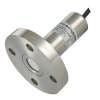 LMK457 Marine Approved Level Transmitter - Marine approved level transmitter with 4-20mA current loop output for shipbuilding with optional all CuNiFe construction for sea-water compatibility in ranges from 0.4 mH2O to 250mH2O gauge.
LMK457 Marine Approved Level Transmitter - Marine approved level transmitter with 4-20mA current loop output for shipbuilding with optional all CuNiFe construction for sea-water compatibility in ranges from 0.4 mH2O to 250mH2O gauge.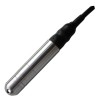 S12C SDI-12 Seawater Pressure & Temperature Transducer - SDI-12 protocol transducer for sensing water depth level and temperature in seawater, brackish water, tidal water, saline water or leachate.
S12C SDI-12 Seawater Pressure & Temperature Transducer - SDI-12 protocol transducer for sensing water depth level and temperature in seawater, brackish water, tidal water, saline water or leachate.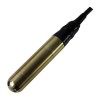 SWL Marine Bronze Submersible Level Sensor - Analogue output sensor for immersing in seawater to determine depth or change in water level by measuring hydrostatic pressure.
SWL Marine Bronze Submersible Level Sensor - Analogue output sensor for immersing in seawater to determine depth or change in water level by measuring hydrostatic pressure. IMCTL Submersible Liquid Level and Temperature Transmitter - IP68 combined liquid level and temperature, dual 4 to 20 milliamp output pressure sensor with a 316L or Marine Bronze housing.
IMCTL Submersible Liquid Level and Temperature Transmitter - IP68 combined liquid level and temperature, dual 4 to 20 milliamp output pressure sensor with a 316L or Marine Bronze housing.
- Abstraction pump protection using a screw-on hydrostatic level transmitter in a tidal river
- Desalination plant feed tank submersible level sensor
- Floating dry dock ballast tank 14ft range 4-20mA output submersible seawater level sensor
- Tidal level measurement with SDI-12 interface seawater level sensor
- Seawater depth sensor with I2C output for aquaculture underwater camera integration
- Low power tide gauge sensor for remote seawater level monitoring
- Dock bridge tidal flap submersible level transmitter with sea water compatibility
- Underwater 50 metre sea depth 4-20mA output sensor
- Seawater intake channel submersible level sensor with 5m range and 4-20mA output
 Brackish Water Hydrostatic Liquid Level Sensors - Brackish water hydrostatic level sensors are specifically designed for continuous submersion in coastal and estuarine environments where fresh and saltwater mix
Brackish Water Hydrostatic Liquid Level Sensors - Brackish water hydrostatic level sensors are specifically designed for continuous submersion in coastal and estuarine environments where fresh and saltwater mix
Find out more about Seawater Hydrostatic Liquid Level Sensors to determine which product options and capabilities will best meet your application requirements.
Seawater presents a particularly challenging environment for level measurement due to its high salinity and corrosive nature. Standard level sensors often fail prematurely when exposed to the harsh conditions found in coastal and offshore installations. To address this, specialized submersible hydrostatic level sensors have been developed using advanced materials and construction techniques. These sensors are designed to provide reliable and accurate depth measurements over extended periods, even when fully immersed in seawater.
The most crucial aspect of a seawater hydrostatic level sensor is its ability to resist corrosion. These sensors are typically constructed from highly durable materials such as titanium, copper alloys, marine-grade stainless steel, or specialized polymers. This ensures that the sensor’s structural integrity and performance are maintained over time, preventing damage caused by saltwater exposure.
Applications
- Tidal Monitoring: Seawater hydrostatic level sensors play a vital role in monitoring tidal patterns and predicting high and low tides. This information is crucial for navigation, coastal engineering, and environmental studies.
- Wave Height Measurement: Accurate measurement of wave height is essential for understanding coastal processes, designing coastal structures, and ensuring safe navigation. Submersible sensors can be deployed to capture real-time wave data.
- Offshore Platform Monitoring: Seawater level monitoring is crucial for various processes on offshore production platforms, including water injection systems, fire suppression systems, and overall platform stability.
- Oceanographic Research: Scientists and researchers use submersible sensors to study various oceanographic parameters, including water depth, pressure variations, and tidal currents.
- Ballast Tank Monitoring: Maintaining proper ballast levels is crucial for the stability and safety of offshore platforms and vessels. Submersible hydrostatic level sensors provide accurate and reliable monitoring of ballast tank levels, enabling precise control and adjustment.
- Bilge Level Monitoring: Preventing the buildup of water in a ship’s bilge is critical for safety. Submersible hydrostatic level sensors can be used to monitor bilge levels and trigger alarms or pumps when necessary.
- Draft Measurement: Monitoring a vessel’s draft (the depth of the hull below the waterline) is crucial for safe navigation and cargo loading. Hydrostatic level sensors can be used to provide precise draft measurements.
